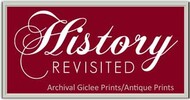 Loading... Please wait...
Loading... Please wait...All prices are in All prices are in AUD
Categories
- Home
- Print Techniques?
- Etching/Drypoint Etching
Etching/Drypoint Etching
Another of the Intaglio printing process is etching. A soft metal, usually copper or zinc plate, is covered with a waxy ground that is resistant to acid. The artist then scratches off the ground with a pointed etching needle where he wants a line to appear in the finished piece, so exposing the bare metal. The plate is then dipped in a bath of acid, technically called the mordant (French for "biting") or etching. The acid "bites" into the metal, where it is exposed, leaving behind lines sunk into the plate. The remaining waxy ground is then cleaned off the plate. The plate has ink applied, and then the ink wiped off the surface, leaving only the ink in the etched lines.
The plate is then put through a high-pressure printing press together with a sheet of paper (often moistened to soften it). The paper picks up the ink from the etched lines, leaving an black and white image. The work on the plate can also be added to by repeating the whole process if the artist is not pleased. Each time the plate is inked up and tested creating an etching which exists in more than one state as it evolves. Etching has often been combined with other techniques such as engraving (e.g. Rembrandt) or aquatint (e.g. Goya).
A derivation of the acid process is Drypoint etching: here there is no waxy ground employed as no acid is used. The artist uses the needle directly onto the surface using it like a pencil. Depending on the tilt of the needle there may be a burred edge. The lines produced by printing a drypoint are identified and influenced by the burr thrown up at the edge of the incised lines. A larger burr, formed by a steep angle of the tool, will hold a lot of ink, producing a characteristically soft, dense line that differentiates drypoint from other intaglio (incised) methods such as etching or engraving which produce a smooth, hard-edged line.This technique is different from engraving, in which the incisions are made by removing metal to form depressions in the plate surface which hold ink, although the two methods can easily be combined, as Rembrandt often did. Because the pressure of printing quickly destroys the burr, dry-point is useful only for comparatively small editions; as few as ten or twenty impressions with burr can be made, and after the burr has gone, the comparatively shallow lines will wear out relatively quickly.





